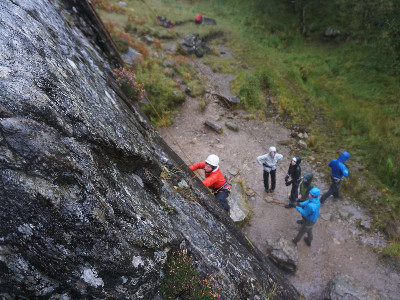
Ethics are a set of ideals and practical guidance that help us make decisions about where we climb, how we climb, and how we treat our climbing environment. Best practice guidelines have been prepared to help everyone through potential difficulties for themselves and for others.
On approach and descent, use existing paths if possible or choose a line that avoids soft vegetation which is prone to erosion.
Avoid chipping, scratching arrows or other graffiti, or building cairns.
Ensure the crag edge and any trees used for belays are protected by suitable padding or slings long enough to drape over the edge when bottom roping.
Avoid abseiling down climbing routes if at all possible.
'Gardening' or removing vegetation, including lichen, by hand, brushing or chemicals is illegal as all plants are protected by law. Consult the local SNH office if you have any questions.
Use chalk sparingly and avoid resin.
Bolts are acceptable in some places, but not others. Pegs should be avoided, except for emergencies, and slings and wires should be removed after use.
Try to avoid overuse of popular venues, particularly as part of a group.
Visit our Rock Climbing Ethics page to find out more.
Contact us if you have any questions or think you have experienced irresponsible climbing activity.